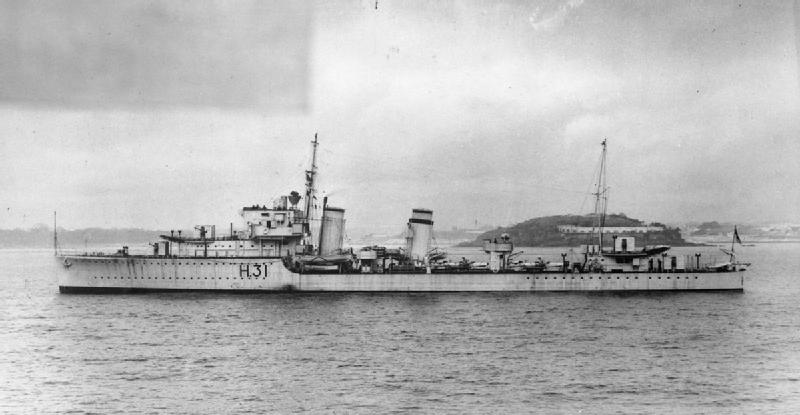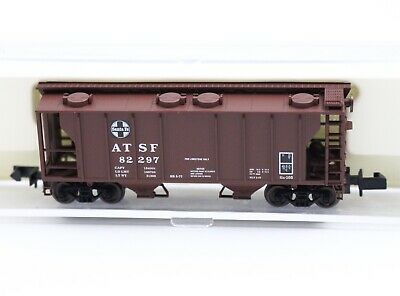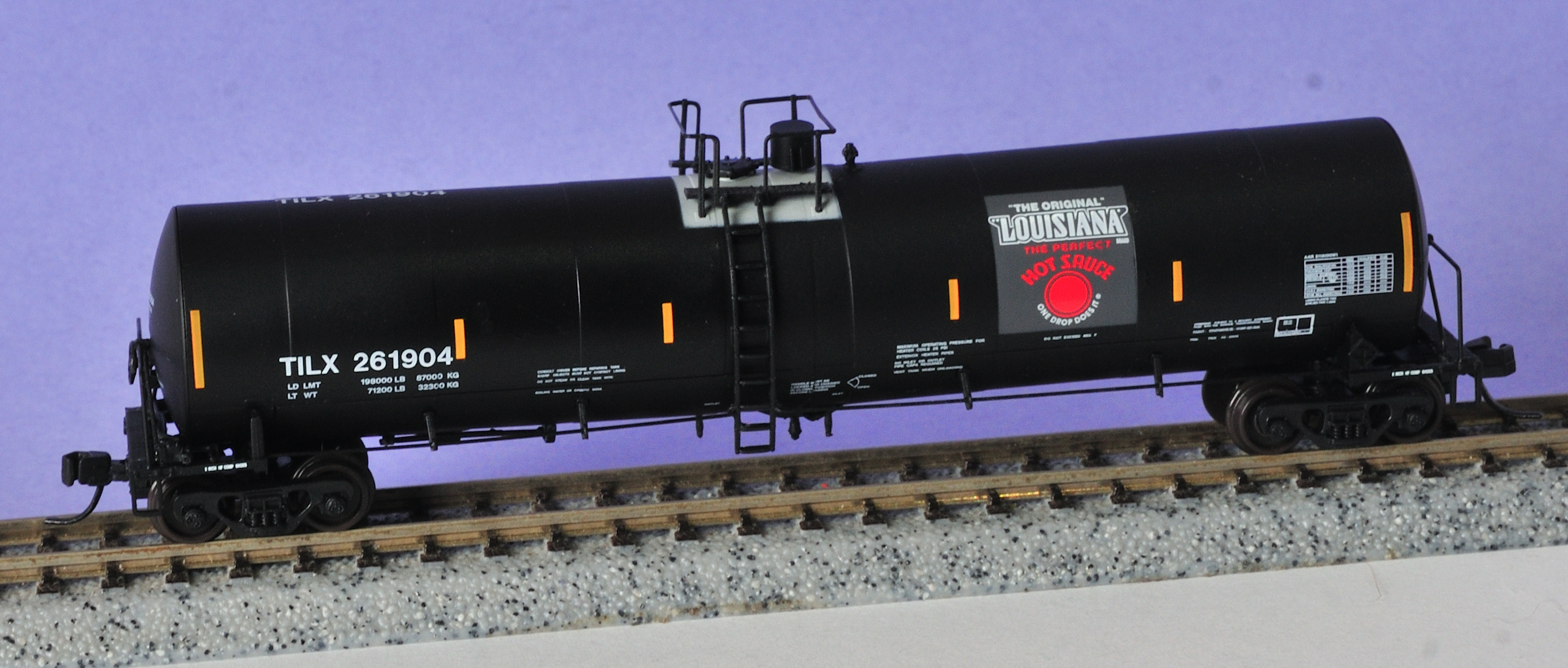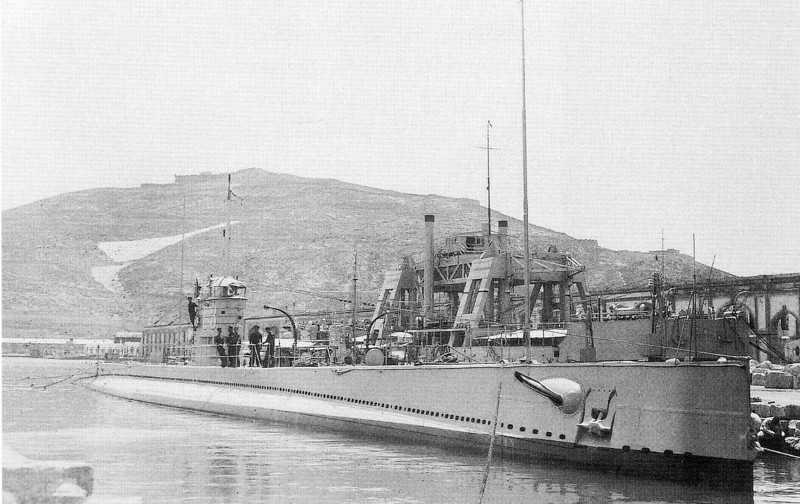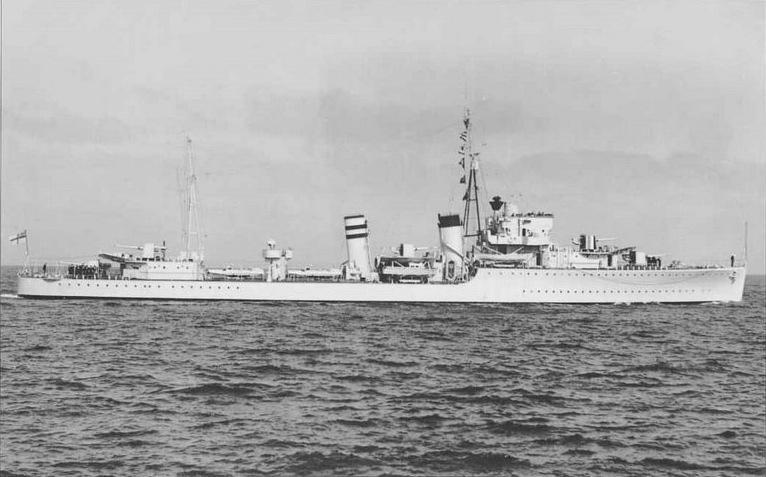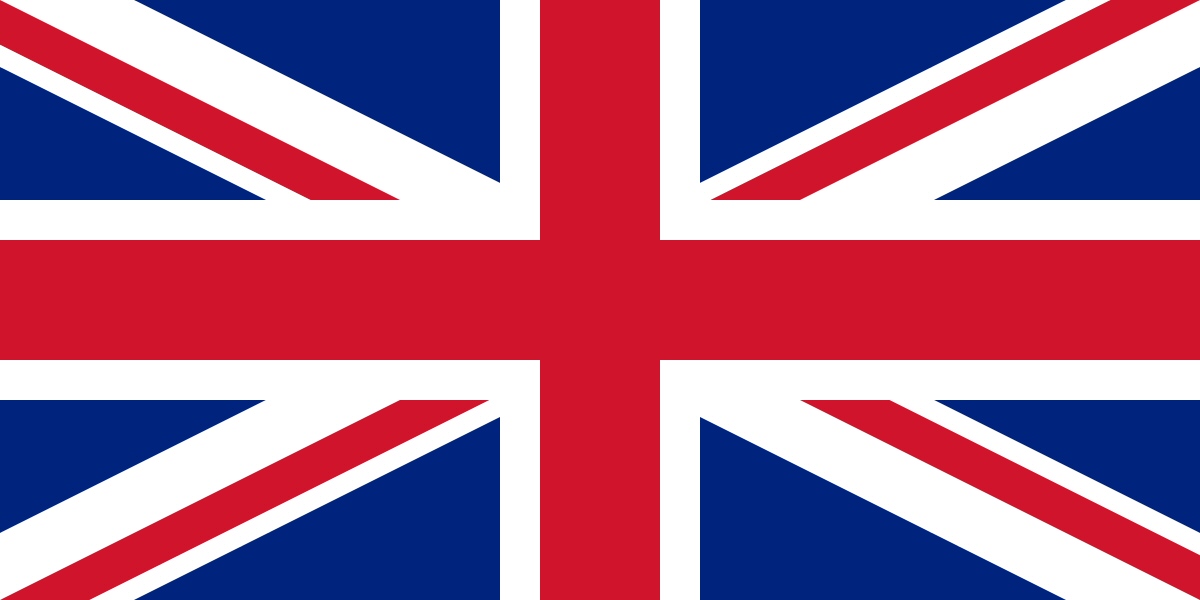History: HMS Griffin (H31) was a G-class destroyer, built for the Royal Navy in the mid-1930s. In World War II she took part in the Norwegian Campaign of April–May 1940 and the Battle of Dakar in September before being transferred to the Mediterranean Fleet in November. She generally escorted larger ships of the Mediterranean Fleet as they protected convoys against attacks from the Italian Fleet. Griffin took part in the Battle of Cape Matapan in March 1941 and the evacuations of Greece and Crete in April–May 1941. In June she took part in the Syria-Lebanon Campaign and was escorting convoys and the larger ships of the Mediterranean Fleet until she was transferred to the Eastern Fleet in March 1942.
Griffin saw no action in the Japanese Indian Ocean raid in April, but was escorting convoys for most of her time in the Indian Ocean. In June she returned to the Mediterranean to escort another convoy to Malta in Operation Vigorous. Beginning in November 1942, she was converted to an escort destroyer in the United Kingdom and was transferred to the Royal Canadian Navy on 1 March 1943. The ship, now renamed HMCS Ottawa, was assigned to escort convoys in the North Atlantic until she was transferred in May 1944 to protect the forces involved with the Normandy Landings. Working with other destroyers, Ottawa sank three German submarines off the French coast before she returned to Canada for a lengthy refit. After the end of the European war in May 1945 she was used to bring Canadian troops until she was paid off in October 1945. Ottawa was sold for scrap in August 1946.
Griffin saw no action in the Japanese Indian Ocean raid in April, but was escorting convoys for most of her time in the Indian Ocean. In June she returned to the Mediterranean to escort another convoy to Malta in Operation Vigorous. Beginning in November 1942, she was converted to an escort destroyer in the United Kingdom and was transferred to the Royal Canadian Navy on 1 March 1943. The ship, now renamed HMCS Ottawa, was assigned to escort convoys in the North Atlantic until she was transferred in May 1944 to protect the forces involved with the Normandy Landings. Working with other destroyers, Ottawa sank three German submarines off the French coast before she returned to Canada for a lengthy refit. After the end of the European war in May 1945 she was used to bring Canadian troops until she was paid off in October 1945. Ottawa was sold for scrap in August 1946.
Class: The G- and H-class destroyers were a group of 18 destroyers built for the Royal Navy during the 1930s. Six additional ships being built for the Brazilian Navy when World War II began in 1939 were purchased by the British and named the Havant class. The design was a major export success with other ships built for the Argentine and Royal Hellenic Navies. They were assigned to the Mediterranean Fleet upon completion and enforced the Non-Intervention Agreement during the Spanish Civil War of 1936–39.
Most ships were recalled home or were sent to the North Atlantic from October–November 1939, after it became clear that Fascist Italy was not going to intervene in World War II. Then they began to escort convoys and patrol for German submarines and commerce raiders. Two ships were lost to German mines in the first six months of the war. Three more were lost during the Norwegian Campaign, one in combat with a German cruiser and two during the First Battle of Narvik in April 1940. The Battle of France was the next test for the destroyers from May–June, with many of the Gs and Havants participating in the evacuation of Dunkirk and the subsequent evacuations of Allied troops from western France. Three ships were sunk, two by bombs and the other to torpedoes. Most of the H-class ships were sent to the Mediterranean in May in case Mussolini decided to attack France and the majority of the surviving Gs were sent to Force H at Gibraltar in July. Several of them participated in the Battle of Dakar, before being assigned to the Mediterranean Fleet with their sister ships. By the end of the year, the ships participated in several battles with the Royal Italian Navy, losing two to Italian mines and torpedoes, while sinking two Italian submarines. The Havants spent most of the war in the North Atlantic on convoy escort duties, losing half their number to German submarines, while helping to sink six in exchange by the end of the war.
Most ships were recalled home or were sent to the North Atlantic from October–November 1939, after it became clear that Fascist Italy was not going to intervene in World War II. Then they began to escort convoys and patrol for German submarines and commerce raiders. Two ships were lost to German mines in the first six months of the war. Three more were lost during the Norwegian Campaign, one in combat with a German cruiser and two during the First Battle of Narvik in April 1940. The Battle of France was the next test for the destroyers from May–June, with many of the Gs and Havants participating in the evacuation of Dunkirk and the subsequent evacuations of Allied troops from western France. Three ships were sunk, two by bombs and the other to torpedoes. Most of the H-class ships were sent to the Mediterranean in May in case Mussolini decided to attack France and the majority of the surviving Gs were sent to Force H at Gibraltar in July. Several of them participated in the Battle of Dakar, before being assigned to the Mediterranean Fleet with their sister ships. By the end of the year, the ships participated in several battles with the Royal Italian Navy, losing two to Italian mines and torpedoes, while sinking two Italian submarines. The Havants spent most of the war in the North Atlantic on convoy escort duties, losing half their number to German submarines, while helping to sink six in exchange by the end of the war.
Nationality: The United Kingdom, made up of England, Scotland, Wales and Northern Ireland, is an island nation in northwestern Europe. England – birthplace of Shakespeare and The Beatles – is home to the capital, London, a globally influential centre of finance and culture. England is also site of Neolithic Stonehenge, Bath’s Roman spa and centuries-old universities at Oxford and Cambridge.
Item created by: gdm on 2019-07-31 07:19:17. Last edited by gdm on 2019-07-31 07:21:08
If you see errors or missing data in this entry, please feel free to log in and edit it. Anyone with a Gmail account can log in instantly.
If you see errors or missing data in this entry, please feel free to log in and edit it. Anyone with a Gmail account can log in instantly.


